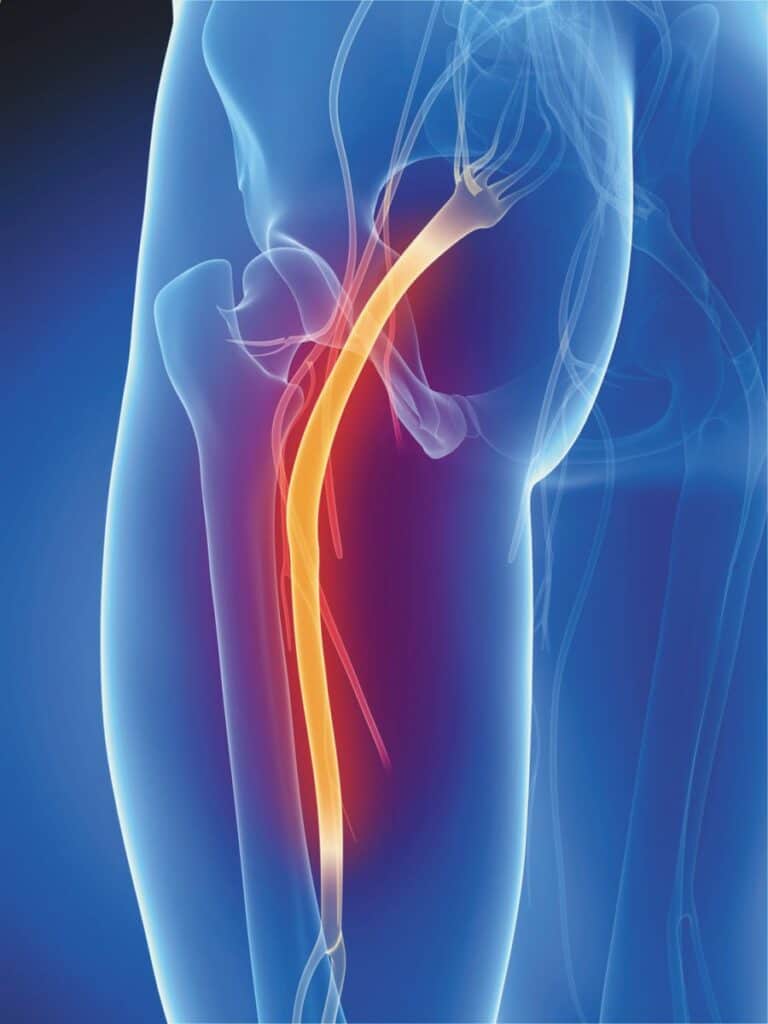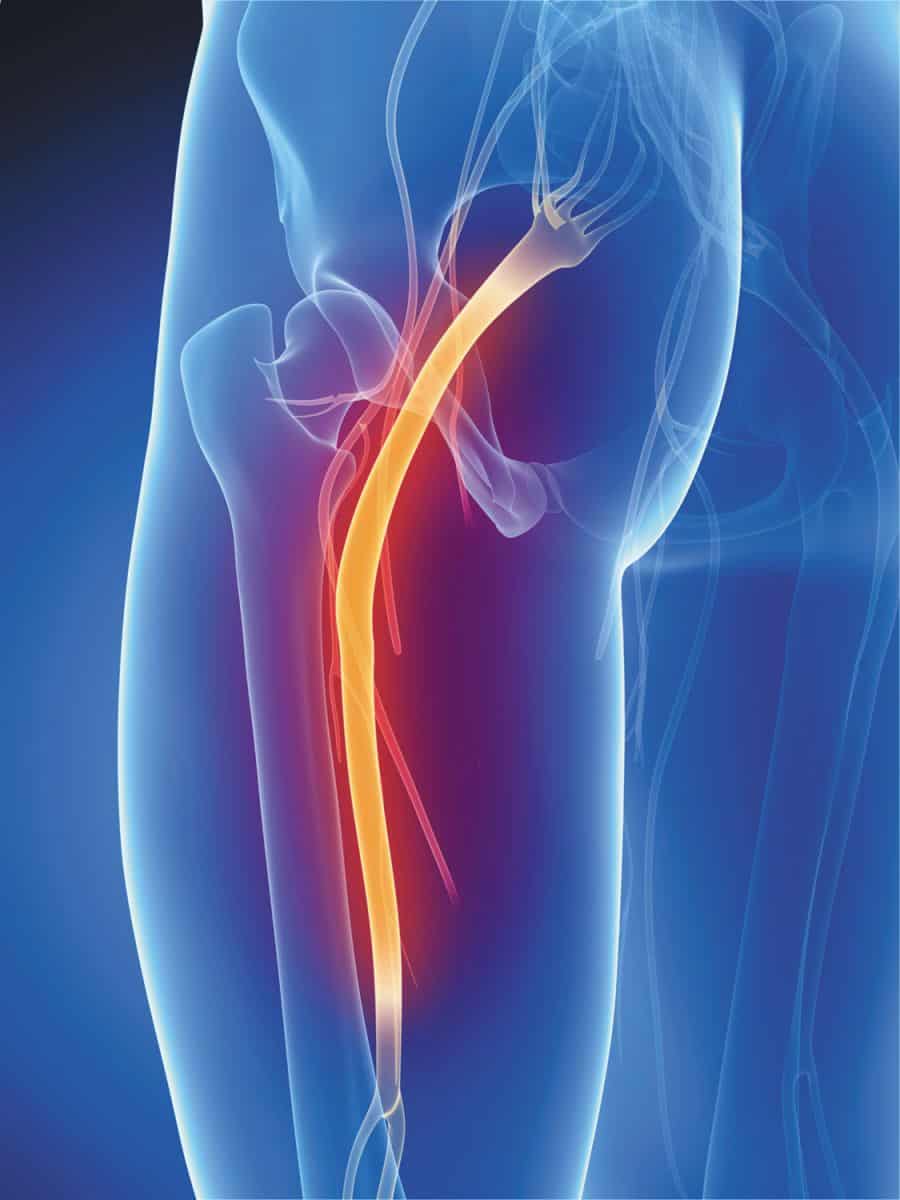
Where is the Problem?
Imagine hitting the tip of your elbow on the corner of a wall. The problem occurred at the elbow, and most likely the pain will stay right in that elbow area. This is a simple problem to understand – the pain is where the injury occurred. Now imagine hitting your “funny bone” on that same corner. We’ve all had that sharp, burning sensation that runs down the forearm and is most painful in the hand. This type of pain is more difficult to understand, because the pain is in a different place from where the injury occurred.
So what is going on here? This scenario is known as radicular pain, meaning that the pain travels, or radiates, to another place in the body. This type of pain is most often due to a nerve-related injury. When you hit that funny bone, it is actually an impact on the ulnar nerve, which runs from your neck, down your arm, through the elbow, and into the hand. Although the problem occurs in the elbow, the brain gets tricked into thinking there is pain further down that nerve path, which is why it feels like a sensation in the hand.
Radicular Pain from the Spine
It is very common for radicular pain to start at the spine, where the nerve root exits the spinal cord through a small hole between vertebrae known as a foramen. When the nerve root is affected, it is possible to feel the symptoms running the entire course of that particular nerve. A great example of this is sciatica. The sciatic nerve originates as a bundle of individual nerve roots that converge to form a major nerve to supply the back of each leg. If these nerve roots get irritated, that can cause the burning pain known as sciatica traveling from the low back, down the leg, all the way into the foot.
There are several things that can aggravate the nerve root, resulting in radicular pain. The discs that are located between most vertebrae can bulge or herniate, which can cause direct pressure on the nerve root. A bulge is when the disc tissue extends from where it is normally located, but does not completely tear. A herniation occurs when the inside of the disc actually rips through the disc tissue, kind of like jelly bursting through the side of a donut. If the joints that are located close to the foramen aren’t functioning properly, they can get inflamed. This inflammation can pool up beyond the joint space and also irritate the nerve root. Individuals with degenerative disc disease will have smaller foramen due to the individual vertebrae sitting closer to each other, which could also put direct pressure on the nerve roots.
Solving the Problem
When we suspect someone has radicular pain, the initial goal is to assess where the problem originates. This process involves tracing the pain back to an individual or group of nerves, and following that all the way back to the spine. Once the problem area has been found, then it becomes an issue of deciding what is actually causing the pain. Disc pressure, inflammation, and other irritations on nerve roots may present differently, and need to be treated accordingly. Finding the cause of the problem is always the most important step to initiating proper treatment. Ask how we can help!
Yours in Health, Dr. Alex

